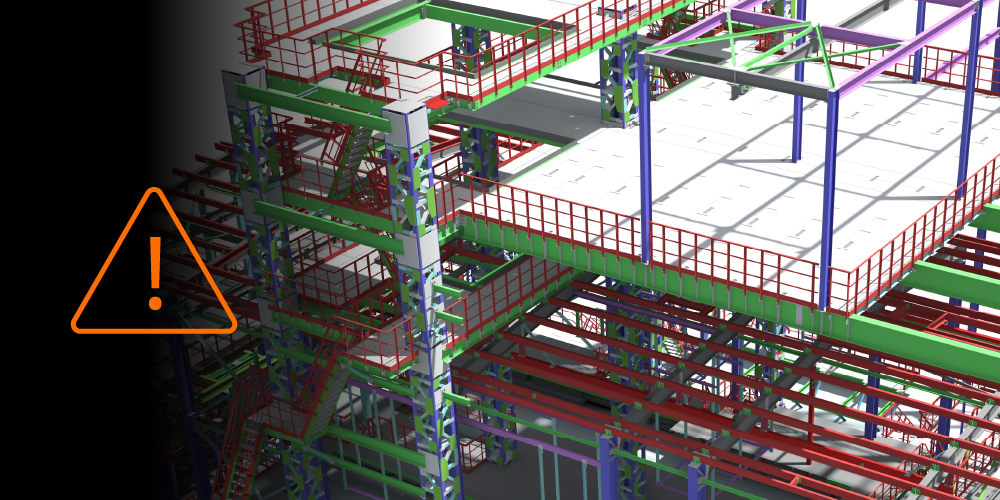Related Articles
— 5 min read
Next-Gen Job-Costing: Ready to Move? 5 Things to Consider Before You Get Started


Last Updated Nov 26, 2025

Shauna Hurley
Shauna is never short of questions when it comes to construction, tech and science. A professional writer, researcher and podcast producer, she loves sitting down with industry insiders for in-depth interviews that uncover the latest developments, debates and emerging trends. Having worked with organisations like Microsoft and the European Bank of Reconstruction, Shauna joined Procore to explore the complex issues facing construction and share fresh, research-rich insights that help professionals navigate a rapidly evolving industry.
Last Updated Nov 26, 2025

In this three-part series, Quantity Surveyor turned Financial Solutions Specialist Clint Burgess uncovers the real-world gains for people, processes, and profits when businesses move from legacy to next-generation Enterprise Resource Planning (ERP) and Job Costing systems.
Shifting from a legacy ERP to a next-generation platform isn’t about chasing the latest tech trend. It’s about setting the right data foundation and giving your teams the right tools to perform at their best while keeping your business competitive as the industry and technology continue to evolve.
Part one and part two of this series showed how legacy systems can limit people, performance, and profits — and how connected, next-generation ERP and Job Costing platforms are helping construction businesses operate with greater visibility, control, and confidence.
Here, Quantity Surveyor turned Financial Solutions Specialist Clint Burgess shares his five priority considerations for businesses looking to make the all-important move to next-generation ERP systems.
Table of contents
1. Define the priority problems most in need of solutions.
“I always suggest starting by pinpointing your team’s biggest pain points — the issues that cost the most time, money or confidence,” says Clint Burgess, Quantity Surveyor turned Financial Solutions Specialist.
“For finance, it might be the hours lost reconciling data that never quite matches. For project teams, it’s the admin and delays caused by disconnected systems. For IT, it’s maintaining software that’s decades old and can’t integrate with anything new. Every frustration should link back to a tangible business outcome.”
“If you’re losing margin because variations live in spreadsheets, that’s not a spreadsheet problem — it’s a profitability problem," Clint says. "Imagine being able to instantly see which subcontractor drives the most variations, how much that’s costing you, and whether you’re recovering it. Once you define the real problem, you can measure the impact of fixing it and prove the value of automation.”
“Legacy systems often hide inefficiencies until month-end. Next-generation visibility changes that, giving every team the insight to spot issues in real time. They can fix them before they escalate.”
2. Map your ecosystem.
Unlike legacy job-costing and ERP platforms, next-generation ERP isn’t a single system. It’s a connected ecosystem that extends well beyond finance. Accounting, job costing, forecasting, reporting, and accounts-payable automation all need to work together.
Legacy platforms typically store data in isolated databases. Updates from site can take days to appear in finance, forcing teams to duplicate data and reconcile spreadsheets just to stay aligned.
“Old systems are like rooms in separate buildings,” Clint says. “You have to walk the data from one to the other. Next-gen tools are like connected spaces — data flows freely through open doors. Everyone sees what’s happening as it happens.”
Pro Tip
Start with a clear map of your current digital environment — identifying where data lives, how it moves between systems, and where the gaps are. Understanding those points of friction makes it much easier to plan which integrations or workflows will deliver the biggest gains first.
Next-generation systems use APIs — secure digital gateways that let different tools share information automatically — while cloud technology keeps that data accessible anywhere, from the site to the boardroom. Together, they create a single, live view of the business that teams can trust and act on.
3. Bring finance, IT, and operations together from day one.
“It’s important to bring finance, IT and operations together from day one,” Clint says. “A cross-functional evaluation team avoids surprises and ensures everyone owns part of the outcome.”
“The projects that succeed are the ones where every team member can see and understand the benefits. So for example, when finance can see how automation reduces reconciliation time, and project teams see how mobile approvals cut days of delay, alignment becomes much easier.”
Pro Tip
Nominate clear leads from each function early — finance for accuracy, operations for usability, IT for integration. Agree on what success looks like, so every team sees their contribution reflected in the final outcome.
“Ultimately, next-generation transformation is a business initiative, not an IT project. The most successful implementations share a common goal: better data, faster decisions, stronger performance.”
4. Plan the transition over time.
“Moving to next-generation ERP is a strategic program, not a quick software swap. The biggest trap is trying to rush through,” Clint cautions. “Allocate dedicated people and time, plan data migration carefully, and test thoroughly before roll-out.”
“Up front planning means fewer issues downstream. Now is the opportunity to discuss if current processes should change. A new system can simplify your processes which may mean process changes need to be considered.
Pro Tip
Build a phased roadmap that allows for testing, feedback and adjustment. Start with the areas that will deliver early wins, validate data quality before migration, and/or potentially run a pilot before full deployment. Measured progress delivers lasting results.
"The aim is not to rebuild every workaround from the old system. Legacy upgrades often replace old tools with new interfaces. Next-generation transitions redesign workflows so teams spend time analysing, not fixing.”
5. Focus on Adoption and Outcomes
Technology alone won’t deliver the benefits — people will. Communicate the purpose behind the change, involve users early, and make adoption measurable from the start.
“Change management is critical,” Clint says. “Leaders set the tone. When people understand the reason for change and see genuine improvements — faster reporting, fewer errors, clearer visibility — that’s when commitment builds.”
Pro Tip
Track engagement during the first few months after launch and celebrate early wins. Keep training simple, relevant, and continuous. Each improvement — from faster approvals to clearer dashboards — reinforces momentum and ownership.
“Adoption doesn’t happen by itself; it needs structure, reinforcement, and visible results. Focus on what can be measured: time saved, visibility gained, and confidence restored. When people experience those benefits firsthand, the system becomes part of how they work rather than something imposed on them from above.”
Where to From Here
“Standing still is now the bigger risk. Leaders who begin the transition today will set the pace for tomorrow and be ready for AI, automation, and the next wave of connected construction innovation.”
“Get the foundations right,” Clint concludes, “and soon you’ll wonder how you ever managed on the old system. The businesses that move now won’t just keep up, they’ll lead.”
Categories:
Written by


Shauna Hurley
Shauna is never short of questions when it comes to construction, tech and science. A professional writer, researcher and podcast producer, she loves sitting down with industry insiders for in-depth interviews that uncover the latest developments, debates and emerging trends. Having worked with organisations like Microsoft and the European Bank of Reconstruction, Shauna joined Procore to explore the complex issues facing construction and share fresh, research-rich insights that help professionals navigate a rapidly evolving industry.
View profileExplore more helpful resources

Managing Direct Costs in Construction: How Visibility Drives Profitability
Direct costs define the financial reality of every construction project. They cover the labour, materials, and equipment that drive delivery and determine profitability. But even the best-planned budgets can shift...

BIM Clash Detection: Reducing Rework, Delays, and Risk in Construction
Design clashes can be a significant hidden cost in construction, as each conflict between systems risks expensive rework, project delays, and reduced margins. BIM clash detection empowers teams to identify...

From Workarounds to Workflow: Solving Construction’s Legacy Job-Costing System Challenges with Next-Gen Tools
In this three-part series, Quantity Surveyor turned Financial Solutions Specialist Clint Burgess uncovers the real-world gains for people, processes, and profits when businesses move from legacy to next-generation Enterprise Resource...

From Legacy Job-Costing Systems to Next-Gen Tools: Delivering Gains for People, Processes and Profits Across Construction
In this three-part series, Quantity Surveyor turned Financial Solutions Specialist Clint Burgess uncovers the real-world gains for people, processes, and profits when businesses move from legacy to next-generation Enterprise Resource...
